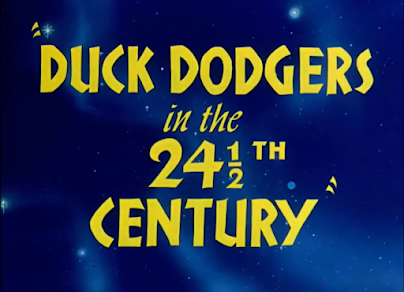A couple of Tom and Jerry oddities
In the cartoon Mouse Trouble (1944), Tom opens a steel trap and slides it into Jerry's mouse-hole in the wall.
That's never going to fit in there!
The circumference of the trap is clearly too wide to fit through the hole, but the scene requires that it does. So, how do they get around this? Maybe Tom could squeeze it in. The trap would squash into a narrower shape (as if it were made of a softer material) as it goes through the small gap, then pop into shape once it had reached the other side. Impossible in real life, of course, but cartoon props are usually more malleable than they would be in real life.
However, this approach didn't seem to be part of directors Hanna and Barbera's cartoon vocabulary (yet), so they (and animator Irv Spence) employed a perspective trick instead.
When Tom slides it in (and when Jerry slides it back out the other exit), the steel trap is at an angle so it appears narrower from the viewer's perspective, and therefore, the viewer is fooled into accepting that it would be plausible for it to fit into the mouse-hole without having to cartoonishly morph in the way a real metal object could not.
OK, here's another one. Tom's front paws are usually hands, right? But when he's down on all fours, they're feet. It's particularly noticeable in this scene from Mouse Cleaning (1948). When Jerry inks all of the sleeping Tom's paws with a stamp pad, they're feet, with soles and three digits (toes) each, but when Tom notices he's been getting inky prints everywhere, they're hands, with palms and four digits (three fingers and a thumb) each!
In some of the earlier cartoons, the animators would get confused by the number of front-digits Tom had. Sometimes even when his front paws were hands, they would only have three digits, drawn as two fingers and a thumb. Here are two shots from Dog Trouble (1942) (inventive titles they had, back in the early 40s...) showing the two variations:
Both these scenes are by the same animator, George Gordon (not Lord Byron).
This was probably because in the earliest cartoons, Tom's "natural" state was to be on all-fours, with his front paws only occasionally serving as hands. When they did, the animators weren't sure whether to have one of his three toes turn into a thumb, or whether he should gain an extra digit.
In time, the Tom and Jerry cartoons would become less pseudo-naturalistic in style, and solid objects could bend and squash as the story demanded, and cartoon cats could walk around on their hind legs all the time without anyone thinking it looked strange.
Update 23 December 2020
Well, [goodness] me, I was just posting this gif in a Facebook comment when I noticed you can actually see Tom's front paws change from hands to feet within a single motion in Mouse Cleaning!
Well, [goodness] me, I was just posting this gif in a Facebook comment when I noticed you can actually see Tom's front paws change from hands to feet within a single motion in Mouse Cleaning!
It looks like it's part of the stretching process.








I love Mouse Cleaning. I can;t imagine why that one's censored and His Mouse Friday is on DVD! I never liked Dog Trouble. I've been watching the T&Js chronologically for a book I'm writing on the GA, and I don't even remember that one, even though I KNOW I'd seen it.
ReplyDelete